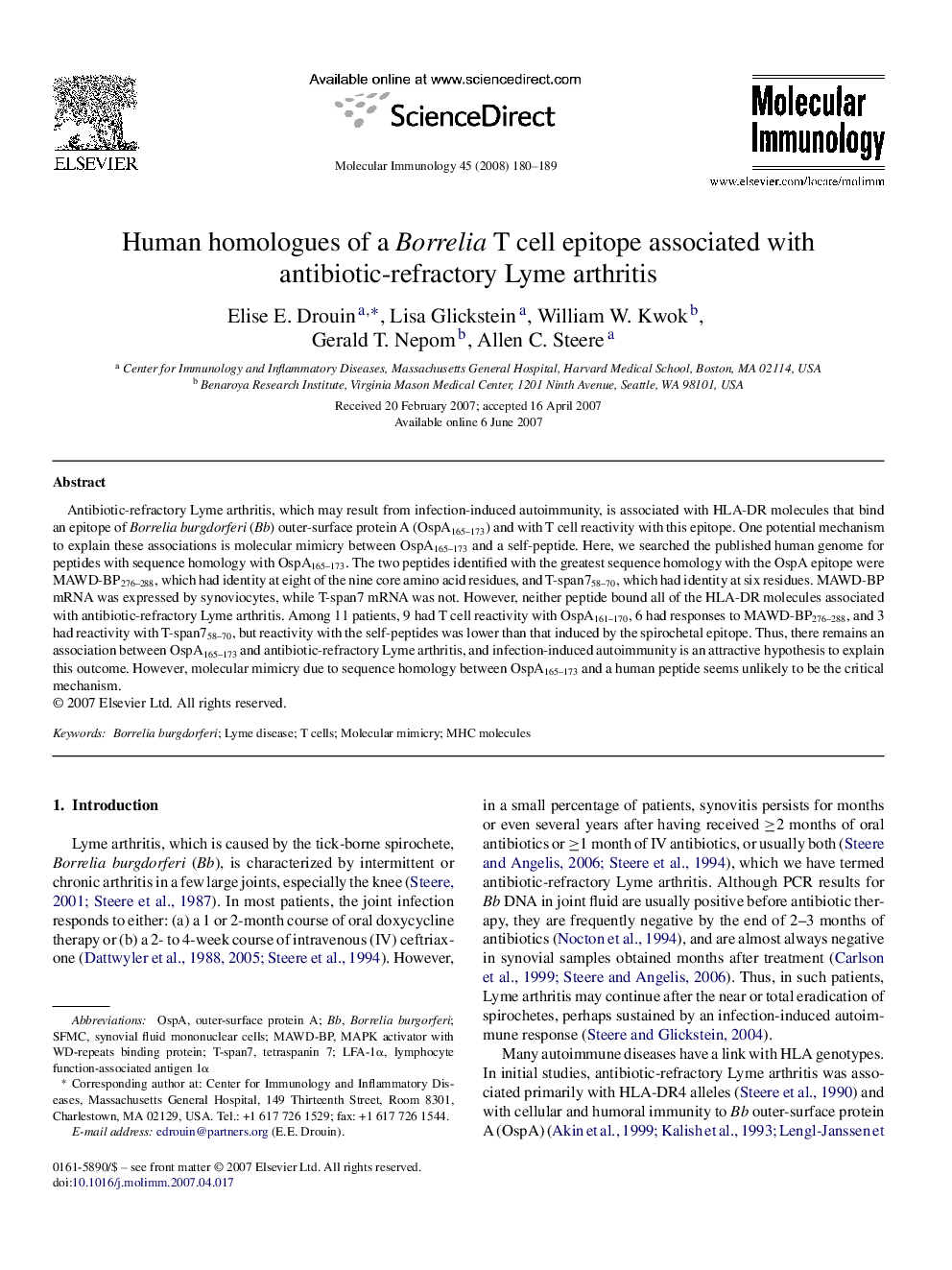| Article ID | Journal | Published Year | Pages | File Type |
|---|---|---|---|---|
| 5918333 | Molecular Immunology | 2008 | 10 Pages |
Abstract
Antibiotic-refractory Lyme arthritis, which may result from infection-induced autoimmunity, is associated with HLA-DR molecules that bind an epitope of Borrelia burgdorferi (Bb) outer-surface protein A (OspA165-173) and with T cell reactivity with this epitope. One potential mechanism to explain these associations is molecular mimicry between OspA165-173 and a self-peptide. Here, we searched the published human genome for peptides with sequence homology with OspA165-173. The two peptides identified with the greatest sequence homology with the OspA epitope were MAWD-BP276-288, which had identity at eight of the nine core amino acid residues, and T-span758-70, which had identity at six residues. MAWD-BP mRNA was expressed by synoviocytes, while T-span7 mRNA was not. However, neither peptide bound all of the HLA-DR molecules associated with antibiotic-refractory Lyme arthritis. Among 11 patients, 9 had T cell reactivity with OspA161-170, 6 had responses to MAWD-BP276-288, and 3 had reactivity with T-span758-70, but reactivity with the self-peptides was lower than that induced by the spirochetal epitope. Thus, there remains an association between OspA165-173 and antibiotic-refractory Lyme arthritis, and infection-induced autoimmunity is an attractive hypothesis to explain this outcome. However, molecular mimicry due to sequence homology between OspA165-173 and a human peptide seems unlikely to be the critical mechanism.
Related Topics
Life Sciences
Biochemistry, Genetics and Molecular Biology
Molecular Biology
Authors
Elise E. Drouin, Lisa Glickstein, William W. Kwok, Gerald T. Nepom, Allen C. Steere,
